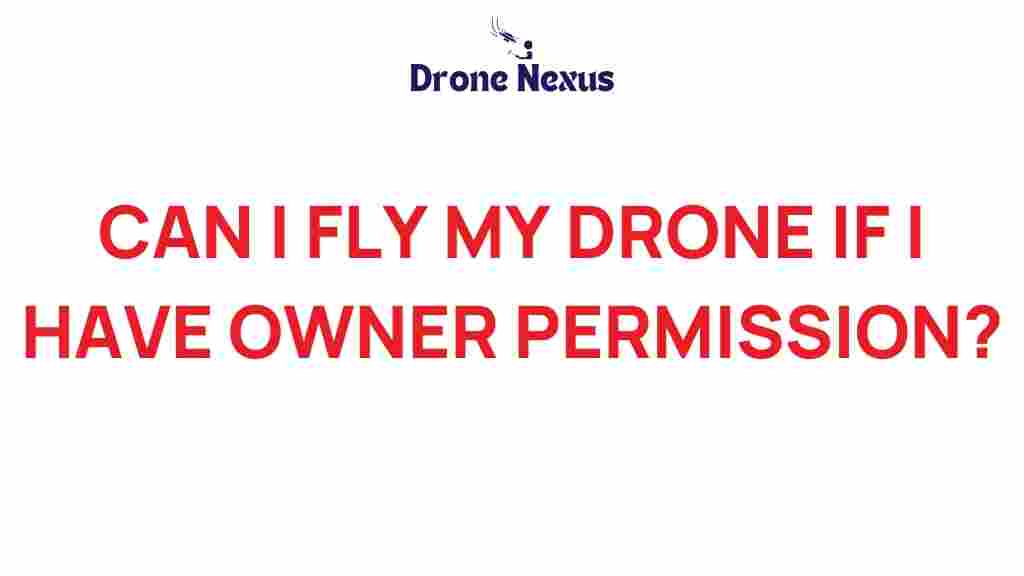Understanding Drone Regulations: Can I Fly with Owner Permission?
In recent years, the popularity of drones has skyrocketed, leading to an increase in regulations aimed at ensuring safe and responsible usage. As a drone pilot, understanding these drone regulations is crucial, especially when it comes to flying on someone else’s property. This article will guide you through the essential aspects of drone regulations, focusing on whether you can fly a drone with the owner’s permission. We’ll delve into the legalities, best practices, and practical tips to help you navigate this complex landscape.
What Are Drone Regulations?
Drone regulations are laws and guidelines established by governmental bodies to manage the use of unmanned aerial vehicles (UAVs). These regulations ensure that drone operations are conducted safely and responsibly to minimize risks to people, property, and privacy. Here are some key points about drone regulations:
- Regulations vary by country, state, and sometimes even local jurisdictions.
- They cover aspects such as registration, pilot certification, flying altitude, and no-fly zones.
- Many countries have specific rules for commercial drone use versus recreational use.
Can I Fly a Drone on Private Property with Owner Permission?
The short answer is yes; generally, you can fly a drone on private property if you have the owner’s permission. However, there are important considerations to keep in mind:
- Legal Ownership: The property owner has rights to their land, which extends to the airspace above it. Securing permission is essential.
- Local Regulations: Even with permission, you must still comply with local drone regulations that may restrict where and how high you can fly.
- Liability Issues: Be aware of potential liability issues. If your drone causes damage or injury, you may be held responsible.
The Step-by-Step Process to Fly a Drone with Owner Permission
Flying a drone with the property owner’s permission involves several steps to ensure compliance with drone regulations and safe operation. Here’s a comprehensive guide:
Step 1: Obtain Written Permission
Always get written permission from the property owner to avoid potential disputes. This documentation should include:
- The owner’s name and contact information.
- The date(s) you plan to fly.
- A description of the area where you intend to operate.
- Any limitations the owner wants to impose.
Step 2: Research Local Drone Regulations
Before flying, familiarize yourself with local drone regulations. Resources to consult include:
- Your country’s aviation authority website (e.g., FAA in the USA)
- Local government websites for specific ordinances.
- Drone community forums for real-world insights.
Step 3: Register Your Drone (if required)
In many jurisdictions, you are required to register your drone, especially if it weighs over a certain amount. Check the local regulations to see if registration is necessary.
Step 4: Prepare for Flight
Before you take off, conduct a pre-flight checklist:
- Inspect the drone for any damage or malfunction.
- Ensure the battery is charged and functioning.
- Check the weather conditions; avoid flying in poor visibility or high winds.
Step 5: Fly Responsibly
While flying, adhere to the following guidelines:
- Keep the drone within your line of sight.
- Respect privacy; avoid flying over people’s homes without their consent.
- Stay below the legal altitude limit set by drone regulations.
Step 6: Post-Flight Review
After your flight, conduct a review:
- Assess the footage or data gathered.
- Check your drone for any damage post-flight.
- Communicate with the property owner about their experience and any concerns.
Troubleshooting Common Issues
Even with careful planning, issues may arise. Here are some common problems and their solutions:
Issue 1: Drone Malfunctions
If your drone experiences a malfunction:
- Immediately land it safely in a clear area.
- Refer to the manufacturer’s manual for troubleshooting steps.
- If necessary, contact technical support for assistance.
Issue 2: Conflicts with Property Owners
In the case of disputes or conflicts:
- Communicate openly with the property owner and address concerns.
- Reiterate the permission you obtained and the safety measures followed.
- Consider offering a demonstration of your drone operations to alleviate concerns.
Issue 3: Legal Complications
If you encounter legal issues:
- Document all communications with the property owner and any incidents.
- Consult with a legal professional knowledgeable about drone regulations.
- Review local laws to ensure compliance and understand your rights.
Conclusion
Understanding drone regulations is crucial for anyone looking to fly a drone, especially on private property. Always secure permission from the property owner and familiarize yourself with local laws to ensure a smooth flying experience. By following the outlined steps and being aware of potential issues, you can enjoy the exciting world of drone flying while staying within the legal framework. For more detailed guidance on drone operations, consider visiting this resource. Happy flying!
This article is in the category Safety and created by DroneNexus Team
